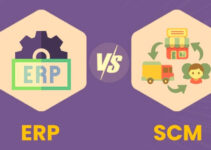The inbound process in warehouse starts; when the products, goods, and materials arrive at the warehousing location of the company. The company receives the material and goods either from the internal manufacturing unit or any other external sources. Today, we’ll discuss the inbound activities in warehouse and; the steps involved in the inbound process of the warehouse.
We can say that the method of receiving inbound orders comprises of following parts;
- Receiving products and goods at the dock;
- Recognizing the items;
- Matching it with the source document;
- Recording the received quantity of items and goods
- Placing the received goods in the stock;
- Recording the place where you have put them
The source document of the inbound warehouse comprises of following;
- Sales returned orders
- Inbound transfer orders
- Purchase orders
Inbound Activities in Warehouse
Some of the main inbound activities in warehouse are as follows;
Receiving
As the name implies, it is when the warehouse receives the goods, items, supplies, and materials. Receiving is a critical stage, and the receiving personnel should make sure that they have received the right quantity of products, in the right condition, and at the right time. Failing to perform any of these checks would cause issues in the operational stages.
The receiving stage also means transferring responsibilities to the warehouse of managing the goods. They have to maintain the quality and condition of the goods until they leave the warehouse. Proper checks at the receiving stage would help you to reject the damaged goods and avoid liability.
Releasing Source Document
The receiving personnel should release the source document like an inbound transfer order or purchase order after receiving the goods. The document release would ensure the availability of products for the put-away stage; the put-away would carry the reference to the source document type and number.
Developing Warehouse Receipt
The warehouse receipt would contain the inbound source document line and category. One warehouse receipt document would be sufficient for multiple source document lines and categories. It tells you the quantity that you should manage and choose the receiving zone and bin.
Put-Away
Put away is when you move the goods, materials, and stock from the receiving dock to the most optimum location in the warehouse. If you fail to place the stock in the right and optimum location, it will disrupt the productivity and operations of the warehouse. However, it offers you various benefits if you put the stock in the right locations;
- Speedy and efficient storage of cargo
- Lower the travel time
- Employees ensure the safety of goods
- Amplifying the warehouse space utilization
- Easy tracking and retrieving of the cargo
Posting Warehousing Receipt
Posting warehousing receipts would develop positive items ledger entries. It requires you to update the quantity received area in the inbound source document. However, if the required putaway button is not on the location card, then the process will stop. Otherwise, posting the inbound source document would ensure the availability of items and products right away. The put-away would reference the source document number and types.
Developing Warehouse Put away Document
Developing warehouse put-away documents is a fashioned approach based on the posted warehouse receipt. Or you can develop the warehouse put away document and allot it to the warehousing employees in a push fashioned approach.
Storage
Storage is the method in a warehouse where you place goods and items in the most optimum space. If you store the items correctly, then amplifies the space optimization and efficiency of labor.
Registering Warehouse Put-away
For every item and product that you have put away, it is significant that you should enter it in the quantity area of the warehouse put-away document. After that, you should register the warehousing put-away.
- Creating warehousing entries for locations that need bin codes on all the items
- Deleting warehouse put-away lines if managed completely
- Keeping warehouse put-away document open until registering the quantity of all relevant posts
- Filling the put-away quantity section and updating the warehouse receipt order lines
Picking
Picking is the method in the warehouse and it focuses on collecting products and goods to fulfill customer orders. It is the most expensive process in the warehouse consisting of roundabout 55% of the total operational expense. Optimizing the picking process would help you to decrease the cost and improve the operational efficiency in the warehouse. The focus of streamlining various processes would improve correction because the errors and wrong shipment of orders would impact the customer satisfaction level.
Packing
Packing is the method of consolidating and wrapping the picked items relevant to the sale order and getting them ready for shipment. The goal of packaging is to make sure that product won’t become damaged in shipment. The packaging cost should be minimal and its weight shouldn’t increase the weight of the product.
Conclusion: Inbound Activities in Warehouse
After an in-depth study of the inbound activities in warehouse; we have realized that inbound process involved in the warehouse play a key role in your business. If you are learning about the inbound processes in the warehouse, then you should keep in mind the abovementioned steps and processes.
Ahsan is an accomplished researcher and has a deep insight in worldly life affairs. He goes Live 3 days a week on various social media platforms. Other than research writing, he’s a very interesting person.


